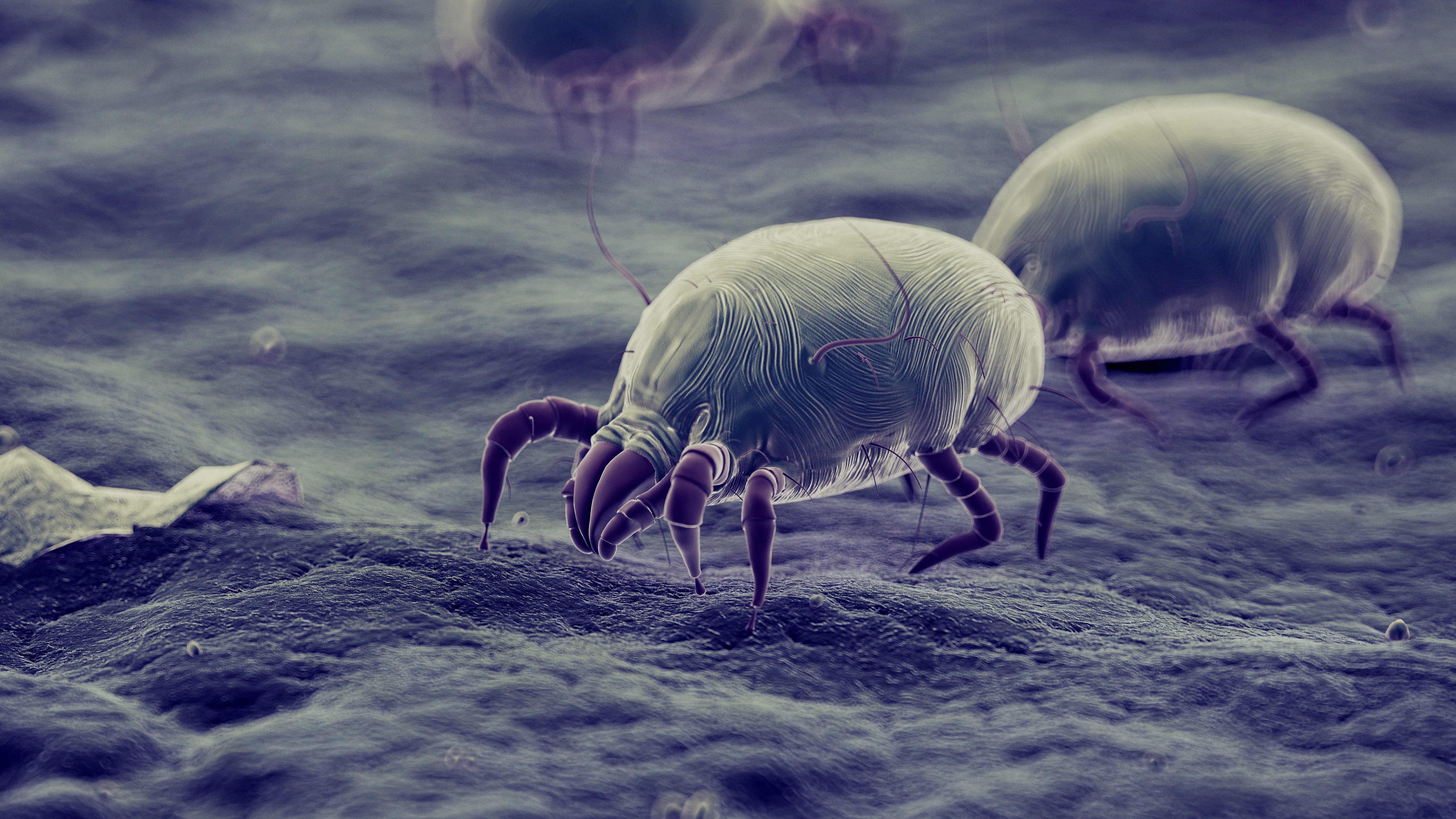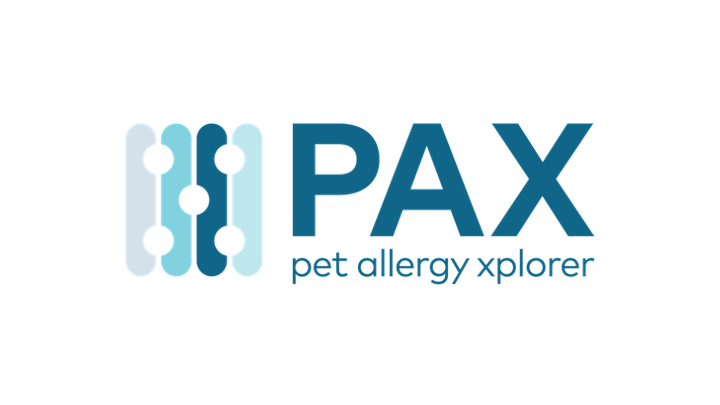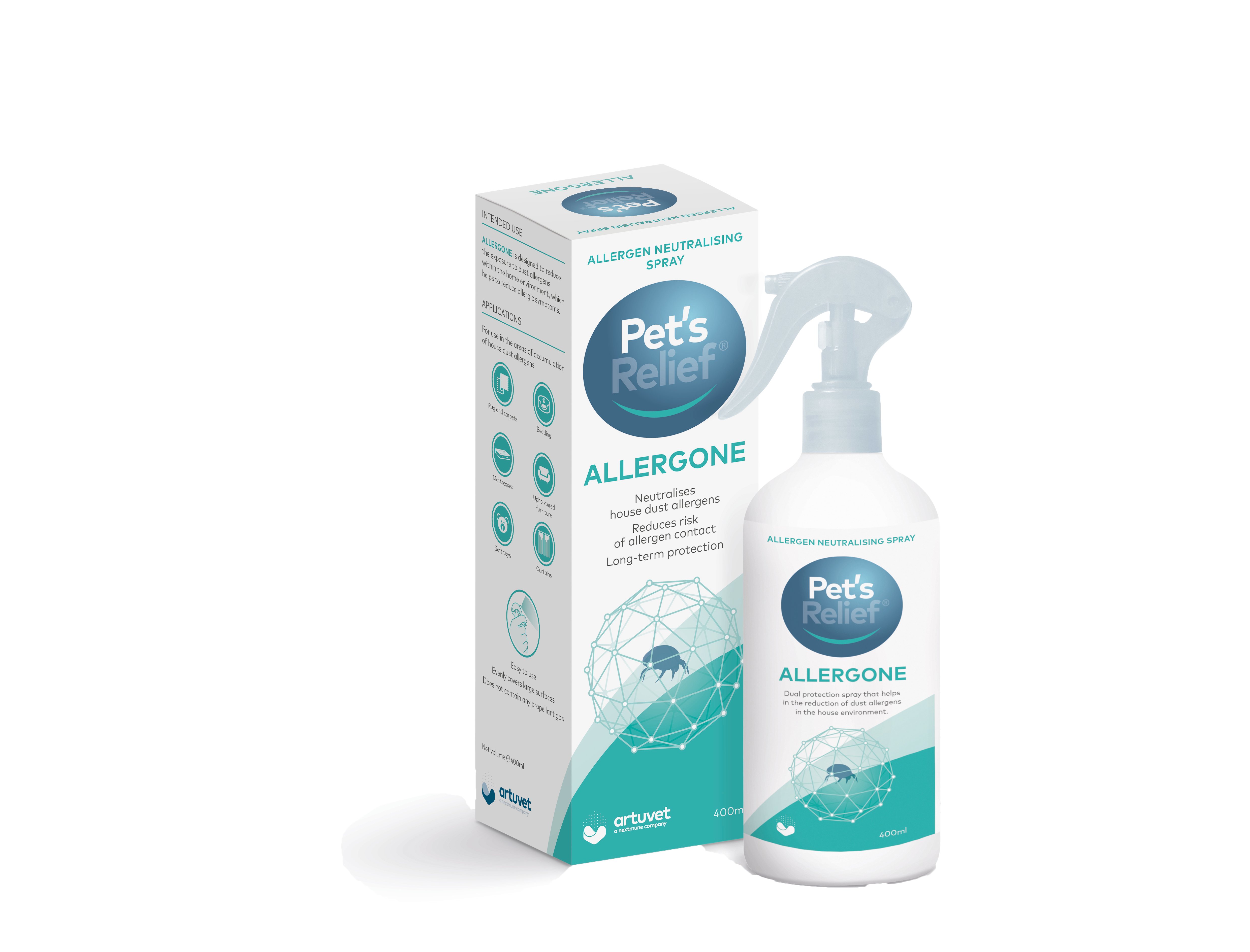As veterinarians, we frequently encounter allergy cases in animals, often attributing symptoms to food or broad environmental factors. House dust mites (HDMs) and storage mites (SMs) are significant allergens, with HDM representing most of the sensitizations detected. This blog delves into the importance of these mites in veterinary allergy, supported by current research, and highlights their identification, impact, and management strategies. During autumn season and as we approach winter, the relevance of mites in allergy cases becomes even more pronounced.
Understanding House Dust Mites and Storage Mites
House Dust Mites (HDMs): HDMs are microscopic arachnids thriving in warm, humid environments, commonly found in household dust, bedding, upholstery, and carpets. Key species include Dermatophagoides farinae and Dermatophagoides pteronyssinus.
Storage Mites (SMs): SMs, including species like Acarus siro, Lepidoglyphus destructor, and Tyrophagus putrescentiae, are typically found in stored products such as grains, hay, and animal feed.
Seasonal impact of mites
During autumn season, certain environmental changes can increase the prevalence and impact of mites. Cooler weather often leads to increased indoor activity for both humans and pets, which can elevate exposure to HDMs. Similarly, autumn harvest activities can stir up storage mites, increasing exposure through the handling of grain and hay. This seasonal shift makes mites more relevant in allergy cases during autumn, as both HDMs and SMs become more prominent in our indoor and outdoor environments.
When Are Pets More Susceptible to Dust Mite Allergies?
High Humidity Environments
Dust mites thrive in high humidity levels. Environments with elevated moisture, such as basements or areas with poor ventilation, create ideal conditions for these allergens to flourish.
Seasonal Changes
Allergen levels can vary with the seasons. During fall and winter, indoor heating systems often increase the presence of dust mites as they circulate dust and allergens throughout the home. This seasonal variation can contribute to an uptick in allergic reactions in pets during these times.
Indoor Living Conditions
Given that pets spend a significant amount of time indoors, they are frequently exposed to allergens present in their environment. Dust mites are commonly found in household bedding, carpets, and upholstery.
Poor Air Quality and Ventilation
Inadequate ventilation can lead to a buildup of dust and allergens within the home. Poor air circulation exacerbates the problem, allowing dust mites and other allergens to accumulate.
Clinical Significance
Allergies to HDMs and SMs can manifest through various clinical signs, predominantly affecting the skin and respiratory systems. Common symptoms include:
- Atopic Dermatitis: Characterized by pruritus, erythema, and recurrent skin infections, atopic dermatitis is a common manifestation of mite allergies. Studies by Marsella and De Benedetto (2017) highlight the role of HDMs in exacerbating atopic dermatitis in dogs, which may become more noticeable as indoor environments become more conducive to mite proliferation.
- Respiratory Issues: Symptoms such as sneezing, nasal discharge, and asthma-like conditions can occur in animals sensitive to mite allergens. Research indicates that respiratory allergies are often underdiagnosed in pets (Reedy et al., 1997).
- Conjunctivitis: Irritation and inflammation of the eyes, discussed in studies by Tater et al. (1997), are also observed in some cases.
Diagnosis and Management
Diagnosis: Accurate diagnosis of mite allergies involves a combination of clinical history, physical examination, and diagnostic tests such as PAX, Pet Allergy Xplorer. Measuring specific IgE antibodies against mite allergens is a reliable diagnostic tool (Halliwell et al., 2005). This testing is particularly useful when seasonal exacerbations are suspected.
Management: Managing mite allergies in animals involves a multifaceted approach, from environmental control to allergen desensibilization, symptoms relieve and topical treatments.
- Environmental Control: Regular cleaning, using allergen-proof bedding, and controlling humidity levels can significantly reduce HDM exposure. Proper storage of animal feed and regular cleaning of storage areas are crucial for controlling SMs.
Allergone is an innovative spray that neutralises the allergens of house-dust mites. It reduces exposure to house-dust allergens and helps to reduce allergic symptoms. The spray has a dual action: (i) It contains an aqueous suspension of microcapsules filled with a mixture of substances that alter the chemical structure of allergen particles; and (ii) It forms a polymer film that glues tiny dust particles together to form larger particles to stop them floating in the air. The aggregated allergens can then be removed easily by conventional cleaning. It is effective for up to 5 months after application, with controlled release of its active ingredients due to slow-release technology. It can be sprayed directly onto objects, such as: rugs and carpets, bedding, mattresses, upholstered furniture, etc.
- Immunotherapy: Immunotherapy is the only treatment that can achieve a “cure” and long term relieve. It works by giving small amounts of HDM or SMs in increasing concentration over time. The goal is to desensitize the patient to these harmless allergens so that its immune system doesn’t see them as threats anymore. Dermatology specialists advocate for immunotherapy because it addresses the root cause of the allergic response rather than just managing symptoms, which leads to a more sustainable solution.
- Symptoms relieve: Antihistamines, corticosteroids, oclacitinib, lokivetmab, etc, have been shown to effectively manage symptoms and represent an important first step to guarantee that patient is comfortable, and immunotherapy can be initiated. Long-term goal is that such relieve is not needed as much or at all, as the immune system starts to respond to desensibilization to these harmless allergens.
- Topical Treatments: Shampoos and sprays for itchy and sensitive skin can provide relief for skin symptoms. Studies support their efficacy, which can be especially beneficial as environmental allergen levels increase.
Ermidrá range, with shampoo, foam and spray options, cleans the skin and coat and can be used for washing sensitive, sore or red skin. A support option for allergy-prone skin.
Dermoscent® ATOP7® range, with shampoo, foam, spot-on, spray and cream options, is made from naturally soothing ingredients and specifically formulated for irritated, itchy, red and hypersensitive skin.
House dust mites and storage mites are significant yet often underestimated allergens. The relevance of these mites in allergy cases is pronounced and should be accounted as relevant for immunotherapy treatment.
 Global English
Global English

 Danmark
Danmark
 Deutschland
Deutschland
 Nederland
Nederland
 België (NL)
België (NL)
 Norge
Norge
 Sverige
Sverige



